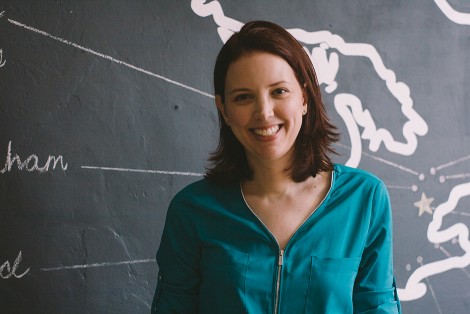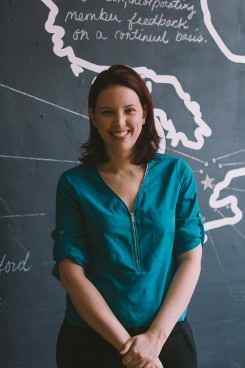On Tuesday, Jennifer Hollett, a journalist and digital strategist, will give the 2015 Hancock Lecture. Entitled “Hashtags, Selfies and Ice Buckets: The Myth of Slacktivism,” Hollett’s lecture will explore the ways that social media has influenced activism.
Hollett, who holds a Bachelor of Arts from Concordia University and a Masters in Public Administration from Harvard University, is seeking the federal NDP nomination in the University-Rosedale riding. She also served as digital director with Olivia Chow’s mayoral campaign.
The Varsity spoke with Hollett ahead of her lecture.
The Varsity: What gives you expertise on the topic of “slacktivism”?
Jennifer Hollet: I came of age when the Internet was coming of age. This really started changing the way we communicated and told stories.
When I was studying journalism, the Internet as we know it now was in its early years of mainstream adaptation. I had an independent magazine, and one of my professors said that he could put it on the “World Wide Web”, which we still called it back then, and so in 1995 I had my own web page.
Upon graduation, I started working in what was called “new media” at Sony Music, and built a really exciting career working with digital tools. I did websites for artists like Celine Dion and Our Lady Peace.
For me, digital has always made sense and has always been a big part of my career. When I shifted to working as a TV host and a reporter, I always used it as a way to research, as a way to connect with people, [and] as a way to share stories to broader audiences.
Now, the work I do in politics, it’s through digital; whether that’s using social media tools on Olivia Chow’s campaign, or SuperPac App, which was an app I co-founded that was meant to bring transparency to TV ads in the 2012 US election.
TV: Why are you giving the talk?
JH: There are a group of students who put together the annual Hancock lecture, and they thought that ‘slacktivism’ is something that students are engaging with and questioning, and that it would be great to explore the idea. So they approached me. I said I’d be happy to speak about ‘slacktivism,’ but warning: I don’t think it exists.
TV: Give me your definition of “slacktivism”.
JH: “Slacktivism” is used to describe people who take a lazy approach to activism, usually online by clicking something or changing their profile pic. The idea is that they do it just to look good and feel good. “Slacktivism”, as a term, is used to discredit digital activism, especially entry-level digital activism.
I don’t think it exists, because I think digital actually allows us new ways to participate in social movements. Very few people are going to show up on the street with a megaphone and lead a march. Most people need an entry point. They need something that is fun, acceptable, and where they are.
Digital is the perfect place to get started. From there, it is up to the organizers and the movement builders to get people more involved.
TV: One criticism is that “slacktivism” is a replacement of traditional activism with something weaker because people think they are participating in a movement when they’re not. Do you agree?
JH: There are a lot of people who think that digital activism is just about a Facebook post, or a hashtag. But that is actually where it starts, not where it ends. If you, for the first time, engage with an issue by sharing a story on Facebook, or tweeting something out with a hashtag, that is the beginning of your engagement. Those of us who work on political or social issues campaigns, there is a framework called “a ladder of engagement”. This was and is still being used in traditional activism, and it’s also used in digital activism.
That is how you take people from a very easy way to get involved, and that can be anything from taking a flyer in the traditional sense to liking a Facebook page, and then you want to move them up that ladder of engagement. You might want to get them to attend a meeting, or give a small donation, or to volunteer. Very few people are going to come to the table and say: “I want to be a leader in this movement.” You use these opportunities to build engagement and build the movement. It isn’t one or the other.
I think part of it is that young people get digital. The majority of undergraduates on campus are digital natives: this is their language, it’s what they know, it is natural. I think why older generations dismiss it is it might not come as natural to them — it might seem too easy.
TV: Some digital campaigns and movements, such as ‘Kony 2012’ or the Twitter campaign #BringBackOurGirls, have been criticized in terms of what they were (and were not) able to achieve. Is this criticism valid?
JH: So to push back on that: it depends what your end goal is. I think it is always fair and important to criticize campaigns and social movements, but that is not exclusive to digital. I think there were missed opportunities with the #BringBackOurGirls campaign, and I’m not even sure if the activists who started it had a proper strategy. But we can’t underestimate the value of the international community making a story or a movement mainstream and top priority.
 I was working at CBC during the Arab Spring. Traditionally, there isn’t much of an appetite for international stories. It can be hard to talk about regimes, and governments, and history, at least in television news.
I was working at CBC during the Arab Spring. Traditionally, there isn’t much of an appetite for international stories. It can be hard to talk about regimes, and governments, and history, at least in television news.
But social media set the agenda. People around the world said that this was a story they care about, that they were following it, that it mattered. This forced the mainstream to give it airtime in a way that we haven’t seen before. That has continued with other movements. We are seeing that with “Black Lives Matter”. We are seeing social media pick up on the story first, and then give a signal to the mainstream that they have to cover it. Sometimes, that is the goal, right? To get a topic in the news, to give a topic national or global attention. That is extremely valuable and very difficult to do.
TV: What you are pointing to is “raising awareness.” But if there are only 140 characters, and 10 of them are the hashtag, how much of a discussion are you actually having?
JH: I think that there are definitely limits with social media, in terms of the character count as well as the need to be snarky, or irreverent, or funny. But what social media is, it is a conversation.The conversations that I’ve been watching and being part of aren’t possible in traditional media. They also aren’t possible in physical spaces, for many different reasons: work commitments, family commitments, and because the people we connect with don’t live next door to us anymore. Social media offers us the space to have an ongoing conversation, to bring in new and marginalized and sometimes surprising voices.
This interview was edited and condensed for clarity and length.



